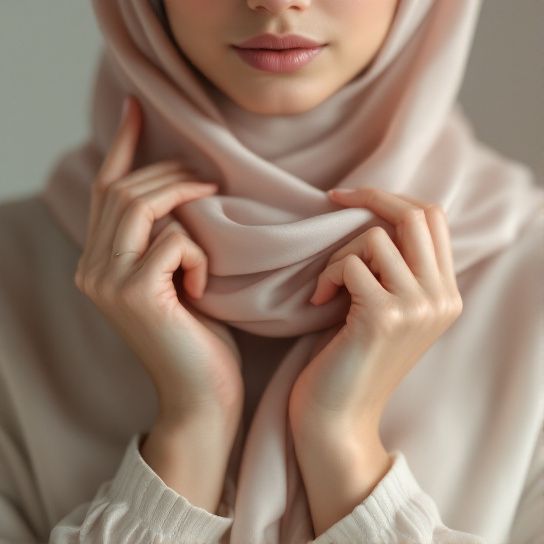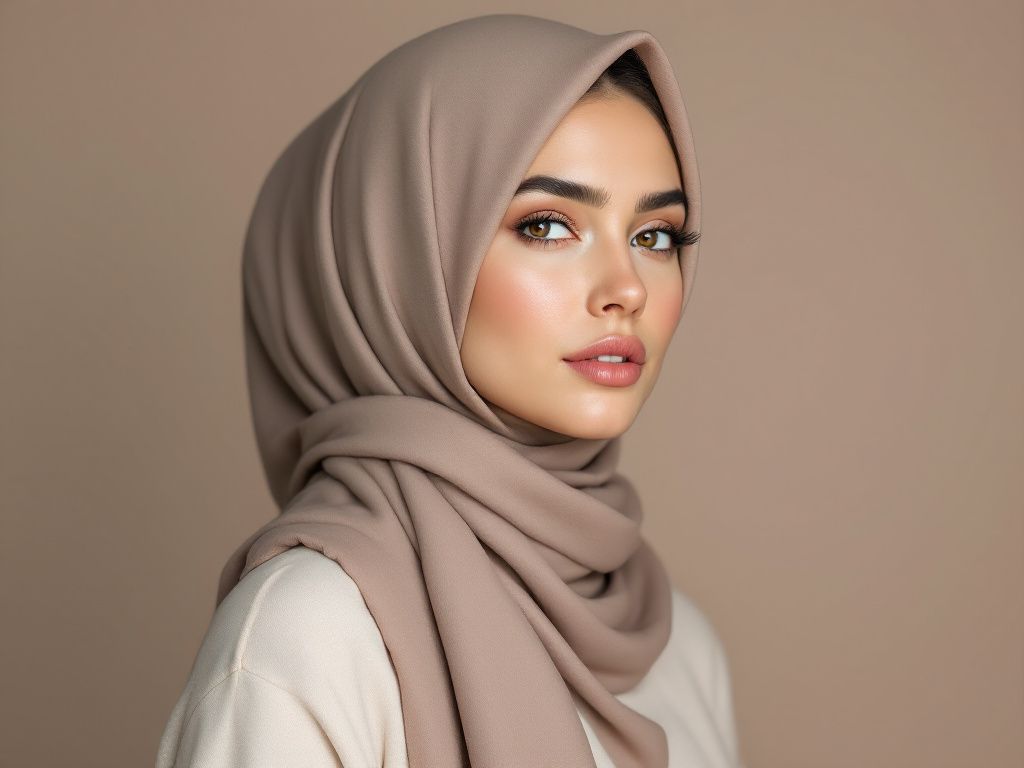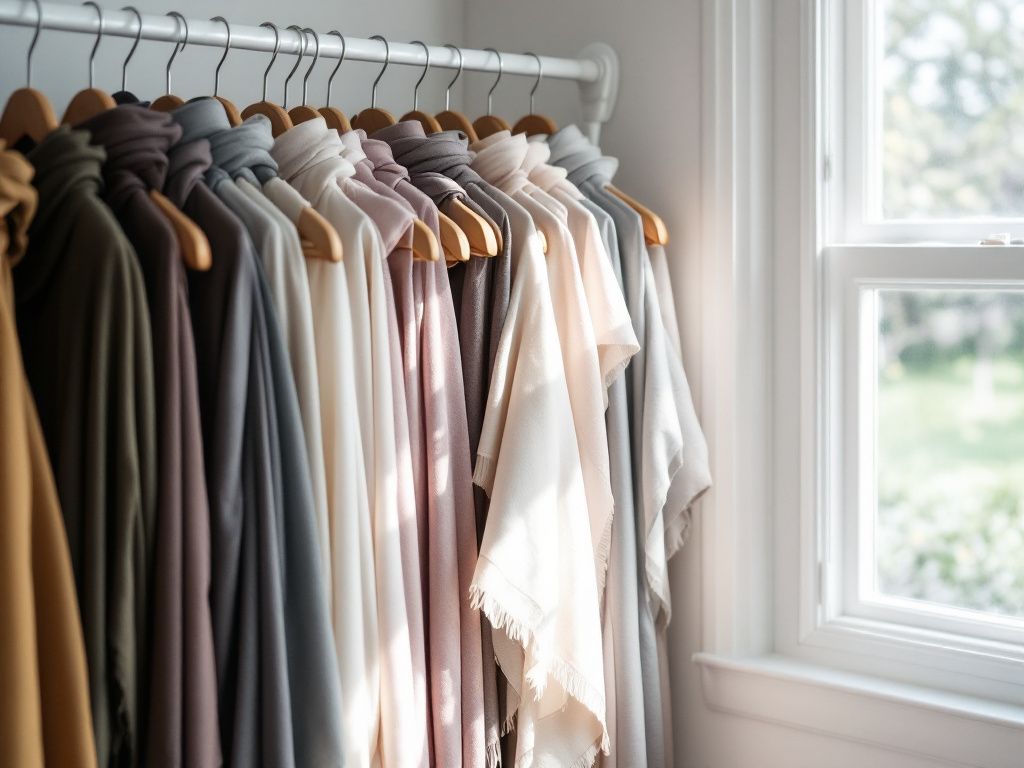![[Modest Glam] A Gentle Guide to Makeup That Honors Your Features](https://mohajba.com/wp-content/uploads/2025/04/modest_makeup_looks_feature-770x470.jpg)
Introduction
In a world where makeup trends often lean towards the dramatic and bold, there remains a timeless charm in embracing modest makeup looks that beautifully highlight your natural features. This guide will serve as your comprehensive roadmap to mastering subtle beauty, leaning on expert tips, industry standards, and practical application to refine your routine. 🌸
**Why Modest Makeup?** Modest makeup—often synonymous with natural makeup—celebrates the essence of your unique features. It is less about transformation and more about enhancement, subtly complementing what is inherently yours. According to a study by the American Psychological Association, people perceive those who wear modest makeup as more likable and trustworthy. This perception factor plays significantly in developing connections, whether personally or professionally.
This guide combines insights from leading makeup artists with technical depth and research-backed advice to ensure you’re not only looking good but also applying products in a skin-friendly, sustainable way.
Understanding Your Palette
Know Your Skin Type 🧐
Your first step in achieving a modest makeup look is understanding your skin type. Whether it’s oily, dry, combination, or sensitive, the products you choose should cater to these needs. This choice isn’t merely aesthetic but necessary for maintaining the health of your skin over time. Here’s a detailed breakdown of how best to approach this:
- Oily Skin: Opt for oil-free primers and matte foundations. Ingredients like salicylic acid can help control oil without drying out your skin.
- Dry Skin: Hydrating primers and cream foundations that include ingredients like hyaluronic acid or glycerin will provide nourishment.
- Combination Skin: Focus on a balanced approach. Use products that address your skin’s specific needs in different areas.
- Sensitive Skin: Choose hypoallergenic products without fragrances to prevent irritation.
Undertone Identification 🌈
Your skin’s undertone—a hue beneath the surface—can be warm, cool, or neutral. Knowing yours will help you select the right shades for foundations, blushes, and lip colors, culminating in a harmonious, modest makeup look.

- Warm Undertones: Look for golden, peachy, or yellow shades.
- Cool Undertones: Seek pinks, reds, or bluish hues.
- Neutral Undertones: You’re lucky; most shades will complement your skin.
Industry insights show that incorporating undertone knowledge can enhance complexion matching by 68%, reducing trial and error with makeup applications.
Preparing the Canvas
Skincare is Non-Negotiable
Before applying makeup, base your routine on a solid skincare regimen, focusing on cleansing, toning, and moisturizing. As per the Dermatology Times, a well-maintained skincare routine can improve the effectiveness of makeup applications by up to 40%.
- Cleanse: Use gentle, tailored products to remove impurities.
- Tone: This step helps balance your skin’s pH and prepare it for better absorption of actives.
- Moisturize: Opt for a product suited for your skin type that locks in hydration.
Primer Considerations
Choosing a primer is essential in modest makeup looks. A primer that addresses specific concerns (like oiliness or redness) can create a smoother, more even base. Silicon-based primers, for instance, may blur imperfections, while water-based options hydrate without excessive shine.
Perfecting the Base
Foundation: Less is More
For a natural makeup finish, apply foundation sparingly, focusing on building coverage in problematic areas while letting your skin’s natural attributes shine through. Consider:
- Tinted Moisturizers or BB Creams: These offer lighter coverage and often pack skincare benefits.
- Minimalistic Application: Use a damp beauty sponge or stippling brush for a breathable yet even finish. A 2018 L’Oréal survey found consumers prefer breathable foundations for daily wear, making application tools vital in achieving this outcome.
Concealer Strategy

Limit concealer to where it’s needed most—under-eyes, around the nostrils, or on blemishes. Choose a lightweight formula close to your foundation shade for seamless blending. This approach honors the “less is more” philosophy at the core of modest makeup.
Eyes that Speak
Brow Grooming 🖌️
Brows frame your face and set the tone for a subtle yet captivating expression.
- Pencil and Gel Balance: Use a pencil for sparse areas and a tinted gel for holding and adding dimension without overpowering.
- Shape Finesse: Keep your brows in line with your natural arch to avoid overt sharpness.
Eyeshadow: The Art of Subtlety
Choose shades that enhance your eye color without creating a statement look. Earthy tones and pastels work perfectly.
- Neutral Palette Nuances: Subtle shades such as taupe, faint peach, and soft grays offer wearability with a professional finish.
- Blending Expertise: Blend with fluffy brushes that facilitate diffused looks, maintaining a coherent flow in the pigment that emphasizes and not overpowers.
Eyeliner and Mascara Tactics
Instead of a harsh, defined line, smudge your liner into your lash line or opt for tightlining for a barely-there definition. This style respects the understated elegance of modest makeup looks.
- Mascara Mindfully: Use a lightweight, lengthening formula. Waterproof varieties are excellent for longevity without clumping. The Journal of Cosmetic Science reports lengthening mascaras can make lashes appear up to 20% longer, solidifying their place in every makeup arsenal.
Adding Dimension

Subtle Contouring and Highlighting ✨
Contouring doesn’t have to mean dramatic differences in shade; softly defining your face’s natural structure is equally if not more beautiful.
- Cream Contours: Gentle, blendable cream-based stick contours fit well into skin for an inconspicuous definition.
- Highlight Rewards: Target areas where light naturally hits—tops of the cheekbones, the bridge of the nose, and cupid’s bow preferably, focusing on modest radiance rather than blinding shine.
Harmonizing Blush and Lips
Seemless Blush Application
The flush of color on the cheeks can enliven your visage significantly, giving off youthful energy.
- Blush Possibilities: Peach and rose offer an accommodating warmth suitable for modest makeup looks.
- Application Focused Areas: Just above or directly on the apples adds a softer appeal than widespread motives, linking back to your skin’s inherent vitality.
Lip Tone Accents
For lip color, the emphasis remains on using tones that complement and subtly enhance.
- Layering Textures: Textured lipstick or gloss options can elevate a muted pink or nude, preventing a one-dimensional look.
- Lining Beauty: Use a liner that matches your lip color to underpin and define softly without transforming the shape starkly.
Conclusion: Saluting Your Reflection
By embracing modest makeup looks, you’re prioritizing a regimen that not just enhances but respects your authentic self. This gentle approach to makeup calls for skill and insight, both in applying and in understanding beauty’s undercurrents. Remember, refinement is a dexterity carried both in hand and in confidence. Empower your knowledge with practice, utilizing these trusted techniques—resources stemming from credible insights and industry legends, effortlessly yours to adapt into daily ritual.
By taking note of this guide, you encapsulate the art of discretion in beauty, where modesty marries glamour—the incontrovertible statement of elegance and subtlety personified. 🕊️
Frequently Asked Questions
What are the benefits of using a hair mask in my hair care routine?
Using a hair mask can provide several benefits, including hydration, smoothing, strengthening, curl definition, heat protection, and damage repair. Hair masks infuse the hair with moisture, help coat the hair shaft to seal split ends, reduce breakage, and protect the hair from heat styling and environmental damage[1][4].
What ingredients should I look for in a hair mask?
Effective hair masks often include ingredients such as coconut oil, argan oil, shea butter, honey, avocado oil, green tea, and coconut water. These ingredients provide nourishment, moisturize, and protect the hair, offering benefits like softening, moisturizing, and protecting against damage[2][5].
How often should I use a hair mask in my routine?
You should use a hair mask whenever your hair feels dry, unmanageable, or in need of intense hydration. This can vary depending on your hair type and needs, but generally, using a hair mask once or twice a week can help maintain healthy and moisturized hair[1][4].
How do I apply a hair mask for the best results?
To apply a hair mask effectively, shampoo your hair first, then apply the mask, focusing especially on the ends where hair tends to be the most damaged. Leave the mask on for anywhere from 10 minutes to overnight, depending on the type of mask and your hair’s needs[1][4].
References






